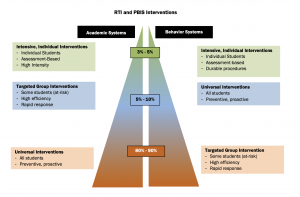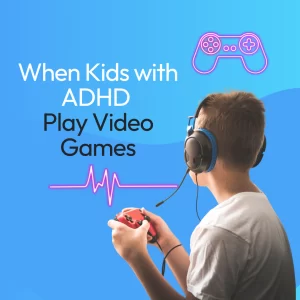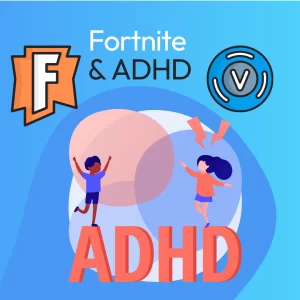Think back to your time in school. Can you recall a time when discipline was used on the “class clown?” Try to remember when the student who struggled to control their behavior, or was often disruptive, was kicked out of class, or reprimanded. If you have a similar memory as I do, you are likely thinking about all of the times that teachers addressed disruptive students by focusing on the negative behaviors. We now know that punishing disruptive behavior is not the most effective way to encourage positive behaviors. The opposite is true. Offering students encouragement and reinforcement, particularly those who are struggling, has been shown to not only increase compliant behavior but also reduce disruptive behavior. Positive Behavioral Interventions and Supports (PBIS) is a toolkit developed for teachers to do exactly that! Reinforce the positive in order to reduce the negative.
What is PBIS?
Positive Behavioral Interventions and Supports (PBIS) is a comprehensive program that was developed to improve students’ academic, behavioral, and social-emotional outcomes, reduce exclusionary discipline—like suspensions, expulsions, restraints, and office referrals—and improve teacher outcomes—like teacher efficacy, school climate, and perceptions of safety. The basic premise of PBIS is a three-tiered model.
Tier 1: The Foundation of PBIS and the Universal Intervention
Tier 1—the foundation of the model—is focused on “Universal Prevention.” Interventions at this level affect all students, equally. Basic expectations like tardiness, classroom behavior, and problem solving are established. But rather than define what students are NOT to do, PBIS encourages schools to teach and reinforce behaviors and expectations they want to see. Students need to be fully aware of these 3-5 positively stated, and easy to remember expectations. And school personnel should be unified and committed to consistently reinforcing students adhering to the standards.
Tier 2: The First Layer of Acute Intervention
In the second-Tier targeted support for students who are not successful with Tier 1 supports alone. This is going to likely be a small group of students, only 10-15% or so. The students requiring this level of support may benefit from social skills groups, self-management, and academic supports. These interventions should be continuously available, readily accessible to teacher referral, easily implemented by school staff, and aligned with school-expectations established for Tier 1. Increasing instruction provided to students and practice with self-regulation and social skills can support students in monitoring and managing their own behavior. In this level of intervention adults increase their level of supervision and support. Increasing the frequency of positive feedback to reinforce goal-directed behavior. Teachers should also consider prevention of problem-behaviors by anticipating the circumstances in which they arise, and ensuring the student is functioning academically.
Tier 3: The intervention targeted to the individual in need
The final layer of intervention is the most acute. Tier 3 is able to successfully navigate highly disruptive, and even dangerous. Students that require this level of intervention are a small, small minority—only about 1% of the population. An understanding of why a student behaves the way that they do is central to developing a support structure. Understanding the behavior in question will help prevent unwanted behavior, teach appropriate behavior, reinforce appropriate behavior and reduce incentives for unwanted behavior. Tier 3 student support teams require the presence of applied behavioral experts, administrative support, and multi-agency support in some cases.
Conclusion
While not a specific set of instructions for implementing PBIS, we hope this post serves as a useful outline for the type of structure PBIS brings to teachers in order to better support their students. We know that students in PBIS schools are more productive, positively engaged, resilient, and more able to develop positive social bonds. When teachers are able to engage students individually, remember not to take student (mis)behavior personally, and reinforce the positive behaviors versus punishing the negative ones the classroom environment really starts to take on a whole new life. Stay with us on the Stand4Kind blog for the next few weeks as we will be talking a lot more about classroom management and PBIS!





2 thoughts on “PBIS: A toolbox for teachers and schools”
Pingback: PBIS Tier 1: Universal Interventions - Stand 4 Kind
Pingback: PBIS Tier 2: The next level of support - Stand 4 Kind